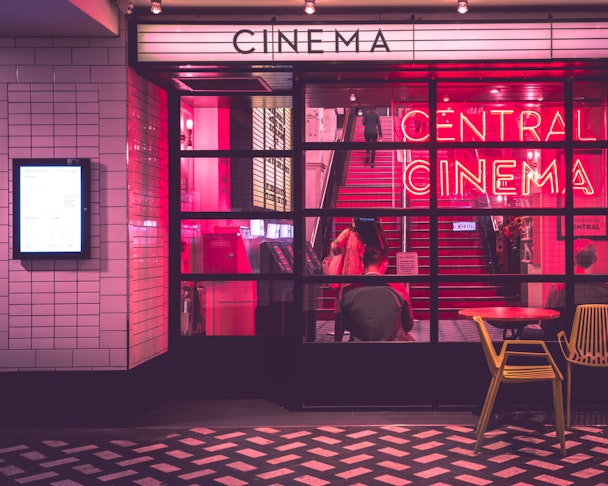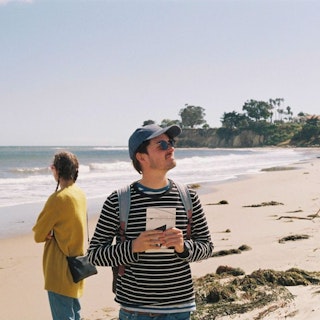Oscars 2022: what we can learn from movie marketing?
Last night brought the Oscars, second only to the Super Bowl on the yearly calendar for big TV spots. But turning away from the spots during the show, what can the industry learn from the ways movies themselves are marketed – an area of the industry that sees some of its most creative cut-through work? We asked 7 experts from The Drum Network.

What can we all learn from movie marketing? / Myke Simon via Unsplash
Lily Robertson Ward, media strategy director at Propellernet: stories underpin everything
How important is a plot? In the movie world, it’s pretty crucial. In marketing, it’s often left on the sidelines. Have we said goodbye to ads like the Hovis ‘boy on the bike’ and John Lewis’s ‘man on the moon’, with emotional storytelling replaced by AR filters and QR codes?
Audiences are demanding that ads be representative and relatable. In nearly every instance, this is held in the highest regard when it comes to creative preference. Is this why storytelling ads from entertainment resonate so well?
As Walter Fisher’s ‘narrative paradigm’ reasoned in 1984, people communicate by telling/observing a compelling story, rather than by producing evidence or constructing a logical argument. Yes, showing your audience that 97% of a sample find your product useful is effective, but what about showing them how it’ll impact their lives through an emotional narrative? Through this theory, we can understand how in system 1 and system 2 thinking, marketing is more effective via storytelling that taps into our unconscious.
As Spielberg himself said on Jurassic Park, “it’s just the magic of storytelling, and it unites the world.”
Trak Ellis-Hill, UK head of content at Momentum Worldwide: the power of excitement
Movies usually rely on a great sell to be successful. Most blockbusters spend as much on marketing as production itself. It’s a huge gamble, but when they get it right it pays off.
Movie promotion usually starts well before a film is released, with teasers and trailers and editorial that leaves film lovers wanting more. This kind of marketing is smart at giving away just enough but not too much, in effect creating a marketing cliffhanger. In our industry, this happens with tech launches, but we can get better across other marketing endeavors.
We want to create anticipation, setting the scene for a new brand or product or service to land without revealing all the information. Designing a program of communication that builds up to your reveal through relevant channels, hype-worthy events, and unexpected partnerships triggers excitement among consumers. Nobody wants to miss the twist at the end.
Savannah Westbrock, account strategy director at Coegi: tailor assets to maximize excitement
All marketers can take cues from how the film industry has tweaked its standard playbook to bring digital and creative strategy together for the best customer experience and brand storytelling.
Consumer attention started to noticeably decline in the 2010s, and theater owners quickly caught on. They started pushing movie trailers to follow the same advice digital buyers give creative teams: shorten your videos. 2.5 minute trailers can be frustrating to sit through; and putting the same on various platforms can fatigue audiences. Thankfully, film marketers have started to improve their playbook and curate messaging for digital platforms.
Shorter ‘teaser’ trailers before the full trailer are becoming the norm; blockbusters now have multiple trailers introducing new footage to excite audiences over time. These strategies can be applied to any brand’s video strategy. For example, use six-second social media placements to tease standard ads. Or adapt your primary ad to digital video placements across social media and YouTube. Consider using sequential messaging to bring the audience through the full campaign story.
Jon Goynshor, head of partnerships at VMLY&R Commerce: think like an entertainment studio
I learned from working for and partnering with the film industry for the last 25 years that brands should think and act like entertainment studios. With that mindset, the consumer becomes part of the campaign instead of the target, harnessing the passion that fans have for culturally relevant co-branded experiences. This approach underpins a fast-growing and exciting field: ‘entertainment commerce’.
Entertainment commerce ranges across live streaming, the metaverse, and modern brand collaborations. It’s about how industry can emulate Hollywood by fusing culture, creativity, and commerce to move from transactional to engaging, entertaining, shareable and most of all, fun.
This helps brands to find new ways to connect with audiences, creating a different story about their products. It surfaces new consumers, delivers purpose with shared equity and inspires action to drive brand and sales.
Alex Wilson, executive creative director at Amplify: invest in a little worldbuilding
2016’s Deadpool used OOH to market a violent, R-rated, superhero movie as a rom-com for Valentine's Day: an example of using movie marketing’s core ingredients (posters, billboards and star power) to subvert expectations.
Despite unconventional approaches like Carrie’s (2013) Telekinesis Coffee Prank and Cloverfield’s (2008) mystery driven campaign, classic strategies tend to win, certainly for bigger studio films whose MO tends to be ‘go big’. Out of category, Squarespace’s Super Bowl spot implemented classic movie marketing techniques by creating a Zendaya-fronted movie trailer-style ad, complete with film posters.
Movie marketing’s long-game approach of dropping teaser trailers a year before release allows audiences to feel they’re buying into a larger story, driving anticipation for far longer periods in comparison to other categories. This enables real-time analytics to help marketers reshape future output and even change the final product. Worldbuilding around IP for an extended period gets audiences more emotionally connected for the eventual drop.
Rhiannon Davies, creative director at Jellyfish: the Netflix effect
Conversation drives viewing and viewing drives conversation. This is the symbiotic relationship that movie marketers know to be true and the equation they use to get there (creative tools + social media) can be applied to almost any industry.
Movie posters are often the first thing an audience sees - launching ahead of any significant marketing. Marketers are now considering how these traditionally OOH formats live on social, (accelerated when the pandemic impacted on OOH’s effectiveness). The first thing released from Jordan Peele’s Us campaign was its famous ‘scissor’ poster, accompanied by an animated version on social. The animated version provided a trailer date - something static posters traditionally can't do because they have to live for a much longer timeframe. When the trailer was released shortly after, it blew up.
Star power is important, but no longer essential. Forbes coined ‘The Netflix Effect’ in 2019: “when a new series catapults an unknown actor to fame - overnight.” The Netflix Effect applies not only to viewing, but to actors’ social accounts. Social ‘stars’ exist in any niche (influencers), but brands who tap into up-and-coming talent early will be the first to reap the rewards of their success by association when they do blow up.
Dougal Strachan, senior vice president at Tommy LA: take risks; try stunts
With 5 to 15 films releasing every week in the US alone, the need to stand out and earn attention is critical for movie marketers.
Netflix used a portion of their marketing budget for After Life to buy 25 benches in locations around the UK in partnership with Calm to drive conversation about the show and its portrayal of grief. Paramount+ made a splash in the middle of SXSW with a drone show promoting Halo. Who knows how many people at SXSW saw it or what the ROI was, but it was covered in publications from Vulture to the Today show.
These activations are not directly selling tickets or converting audiences, but they’re shared and discussed, making the media they’re promoting part of the global conversation. Combine this with paid media, organic social, talent/influencer activations and 3rd party partnerships all at once, and you create the sense of an inescapable pop culture event that everyone needs to be part of and to have an opinion on. This is how blockbusters are made and other industries could take more risks in search of their own blockbuster successes.
Christian Perrins, head of strategy, Waste Creative: break the formula
The beauty of movie marketing is that it’s highly formulaic. Film fans anticipate all the key beats - teaser, trailer, key art, shareable socials, talent doing the rounds, maybe wrap the IMAX if the budget stretches. For a creative agency, that’s a dream. And where there’s expectation, there’s space for surprises. Some of the most memorable campaigns have taken these familiar tropes and done something different, like Deadpool's TV interview parodies that descended into violence.
Not every marketing campaign has the brand identity to push that hard, but in markets where the rhythms are so familiar, it pays to syncopate a little. Be a jazz musician, not a covers band.
Content created with:

Propellernet
Propellernet is a digital marketing agency that creates amazing commercial success for its clients. B-Corp certified, we put people and planet first in everything...
Find out more
Momentum Worldwide
Momentum Worldwide is a global experience agency partnering with and transforming the world’s most famous brands since 1987. Built on the simple truth that it’s...
Find out more
Coegi
Coegi is an independent digital agency providing services across digital strategy, media buying, paid social, search and influencer campaigns. We bring together...
Find out more
VML
VML is a leading creative company that combines brand experience, customer experience, and commerce, creating connected brands to drive growth. VML is celebrated...
Find out more
Amplify
We solve problems.
At the heart of any problem is a person. A real person. What they think, believe, want or need. We help brands to connect with them and...

Jellyfish
Jellyfish is a marketing performance company for the platform world, where success demands a creative, multi-platform mindset. We help brands thrive, by navigating,...
Find out more
Tommy
Tommy are a Global Creative & Production Studio who stand out in the sea of sameness to deliver work that is truly distinctive. Ideas that are different. New. Evoke...
Find out more
Waste Creative
Waste is an independent creative agency founded in 2006. We connect entertainment brands with their fans, to drive creativity, culture and commercial success. A...
Find out more
